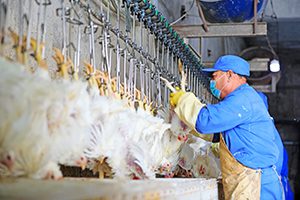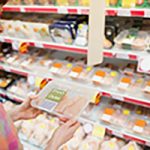Dear friends,
Over the past few weeks, we have all found ourselves facing a situation never before seen on this scale. How are we, at EW Nutrition, dealing with it? In a few words: with responsibility to customers, partners, and employees. To find out what we are doing as a company, but also to find out how COVID-19 might spread and what YOU can do to limit risks to yourselves and others, read more here.
What we are doing as a company
Recognizing the challenge posed by COVID-19 in our times, we at EW Nutrition remain on high alert, focused primarily on delivering solutions to our customers and security to our partners and employees.
No Coronavirus cases or known contact with such exist at present among our international teams, yet the EW Nutrition management is acting responsibly on three levels:
- Coordinating operations to ensure on-time and on-standard delivery to our customers
- Postponing/canceling all events that involve any relatively large group of customers and/or employees, regardless of the costs to the company, in order to ensure the health and safety of everyone involved (three events have been canceled/postponed so far: in Turkey, Germany, and Mexico)
- Coordinating with employees to ensure maximum levels of hygiene are observed, as well as best practices of social distancing and self-isolation in order to “flatten the curve”. Where necessary and possible, remote work has been encouraged.
Moreover, to stay ahead of any potential disruptions and to keep on top of the news, the management team at EW Nutrition meets every morning for updates and sends out periodical communications to all concerned.
With the measures it has adopted and the positive code of conduct we are modeling, EW Nutrition is acting preemptively and responsibly to address any present and future challenges that the COVID-19 pandemic may raise. We are confident of our company’s capacity to provide stability and value to our customers, partners, and employees.
How does the virus spread?
New research from the University of Austin, Texas, shows that more than 10% of the cases are transmitted by people without any observable symptoms – what is knows as “asymptomatic transmission”. This type of transmission makes containment more difficult, warranting “extensive control measures including isolation, quarantine, school closures, travel restrictions and cancellation of mass gatherings.”
Since this is a new virus, it is impossible to say with 100% certainty how it is spread. However, it is almost certain that one of the transmission pathways is through the cough or sneeze droplets from infected persons, even when these infected persons do not show very clear signs of the disease.
It is also possible that contact with objects on which such droplets reside may be a secondary pathway of transmission. So far, it is not known for certain how long COVID-19 can survive outside the body, but a related virus (MERS-CoV) was known to survive for up to 60 minutes in the air. Bear in mind, therefore, that objects in public spaces and confined spaces such as restrooms and elevators might also be sources of infection.
What can you do to reduce risks?
Social distancing
Keep a distance of at least a meter from other people: not just those who sneeze, cough or in any way appear to be ill, but generally from people you know have spent any time outside or with other people. This way you minimize the risk of being hit by droplets of saliva from people who may be already infected or carry the virus.
It is a radical practice, yet it is proven to be very effective. This is the solution that many countries that were hit by the SARS epidemic, for instance, adopted to curb the virus’s explosive growth.
Wash your hands
Soap and water or an alcohol-based hand sanitizer are the best way to keep viruses away. Wash your hands thoroughly not just every two hours, but literally as often as you can, and especially after contact with other people or objects in public places.
Avoid public places
This includes bars, restaurants, theaters or any other places that may not already be closed. Since it is not yet clear how long coronavirus survives in the air or on objects, even places that may appear safe could potentially still harbor active viruses.
Assist the elderly – cautiously
The elderly and those with preexisting conditions are known to be at higher risk than the rest of the population. If you are an active member of the population outside these groups, it is important to minimize contact with those at risk. However, do assist them by ordering or delivering their shopping for them, or in any way that minimizes their exposure to potential sources of infection.
Avoid touching your face
Your mouth, nose, and eyes are easy pathways for the virus to transfer from your hands to inside your body. Even between sessions of hand-washing, it is important to remember not to touch your face. You may be unaware of certain gestures, either when touching objects or when touching your face, so this is a type of learned behavior that we all need to pay attention to.
Do not rush to the ER
If you do feel unwell, it is important to not rush out to a clinic or hospital. Please call the emergency services and follow their instructions. Rushing out in case of infection can be detrimental to your health and the health of other people you will be exposing. Bear in mind that, in most cases, the symptoms of COVID-19 are mild (fever and coughing being the most common) and there is no cause to panic.












